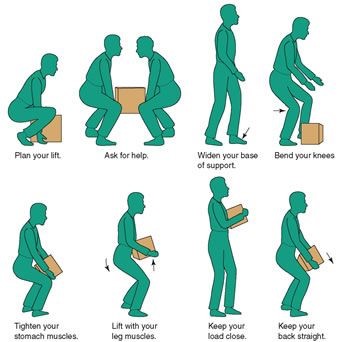
By Connie Colbert
Director, Canyon Health and Wellness Clinic
According to Mayo Clinic 2019, “Most acute back pain gets better with a few weeks of home treatment. However, everyone is different, and back pain is a complex condition. For many, the pain doesn’t go away for a long period, but only a few have persistent, severe pain.”
Most initial treatment involves over-the-counter pain relievers (Ibuprofen, Naproxen, Tylenol) incorporated with the RICE protocol, which generally helps. The RICE acronym stands for:
- R – rest
- I – ice
- C – compression
- E – elevate the injured body part (preferably higher than your heart)
However, bed rest is often not recommended. Continue your activity but listen to your body and how it is tolerating the activity. Try light walking and performing activities of daily living – showering, cooking, light cleaning – and see how you feel. Stop immediately if your pain increases, but do not avoid these activities out of fear the pain might return.
If the OTC remedies and RICE do not work, seek medical attention. Many of the initial treatments will be ones you already have tried, but this will give you and your provider a head start on the next needed interventions.
Other interventions that may be prescribed are:
- Muscle relaxants (for mild to moderate back pain; however, these can make you dizzy or sleepy, so use care and caution if prescribed)
- Topical pain relievers (these can be in lotion, patch or salve that should be rubbed into the direct site of the injury)
- Referral to physical therapy (this can aid in restoring normal function and body mechanics after injury)
- Imaging, sometimes after the swelling has gone down; your provider can order this as well.
There are alternative therapies that help with back pain as well, such as certified chiropractic care, acupuncture, transcutaneous electrical nerve stimulation (TENS), massage therapy and yoga. The Mayo Clinic provides more information here.
Prevention is the key
Prevention of back pain is the best and highest recommended tool for treatment. It is imperative to have proper body mechanics, comprised of the following principles:
- Maintain a stable center of gravity (a strong core is needed)
- Bend from hips and knees, not waist or back
- No prolonged bending
- Use arm and leg muscles to lift, not back muscles
- Carry objects close to your body
- Do not twist body; adjust feet and shift to turn
- Get help if necessary.
See the diagram below for proper lifting techniques:

Click here to view 10 stretches to avoid hip and lower back pain and short videos to ensure proper body mechanics during performance.
In case of emergency
Please seek qualified medical attention in case of injury. Red flags for immediate follow-up in ER/Urgent Care are as follows:
- Unexplained fever or weight loss
- Loss of bowel or bladder control
- Unexplained incontinence
- Previous or family history of malignancy
- Prolonged steroid use
- Focal neurological deficit
- Pain increases at night
- Urinary retention for more than six weeks
- Discoloration of limb
- Numbness, tingling or loss of sensation at any time















